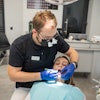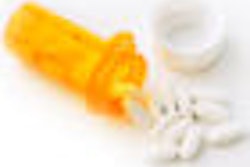Lidocaine, when administered via nose drops or a nasal spray, travels through the trigeminal nerve and collects in high concentrations in the teeth, jaw, and structures of the mouth, researchers from Regions Hospital in St. Paul, MN, report in the May-June issue of Molecular Pharmaceutics.
The discovery could lead to a new generation of intranasal drugs for noninvasive treatment of dental pain, migraine, and other conditions, according to the scientists.
William Frey II, Ph.D., and colleagues noted that drugs administered to the nose travel along nerves and go directly to the brain. Until now, however, scientists hadn't checked to see whether intranasal drugs passing along that nerve might reach the teeth, gums, and other areas of the face and mouth to reduce pain sensations in the face and mouth.
Neil Johnson, working in the labs of Frey and Leah Hanson, Ph.D., found that lidocaine sprayed into the noses of laboratory rats quickly traveled down the trigeminal nerve and collected in their teeth, jaws, and mouths at levels 20 times higher than in the blood or brain. The approach could provide a more effective and targeted method for treating dental pain/anxiety, trigeminal neuralgia, migraine, and other conditions, the researchers noted.
In addition, the maxillary sinus may serve as a better location for administering anesthesia, providing a more rapid and focused delivery of anesthetic, they wrote.
"Following intranasal administration, drug not only travels from the nasal cavity to the brain via the trigeminal neural pathway but also in the opposite direction to orofacial structures. Targeting the trigeminal neural pathway is an effective method of targeting its connected orofacial and brain structures," they concluded.
Copyright © 2010 DrBicuspid.com



















